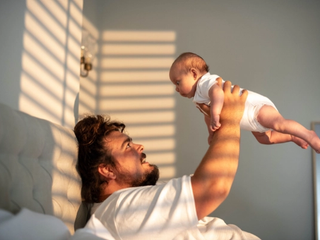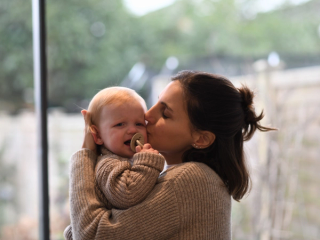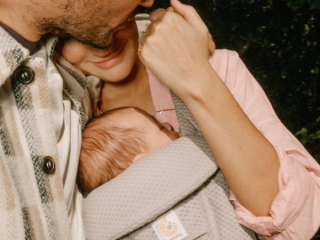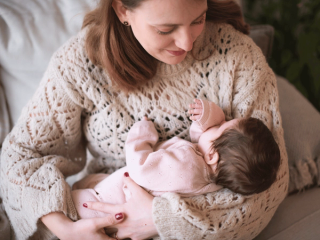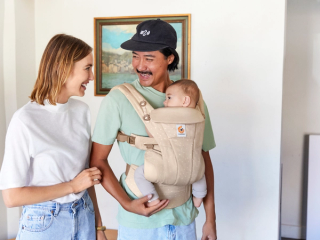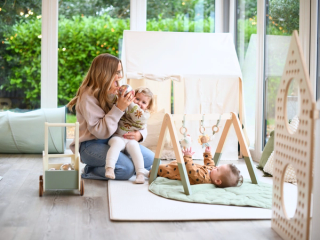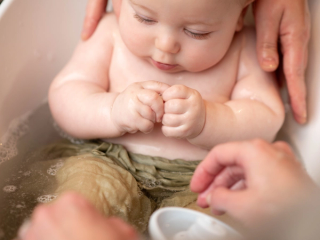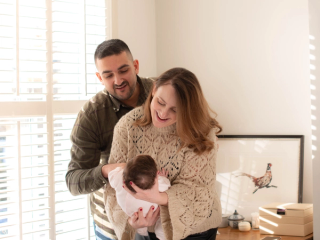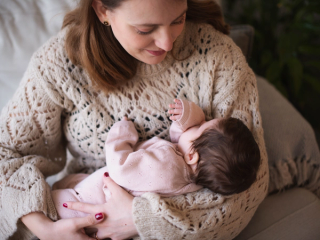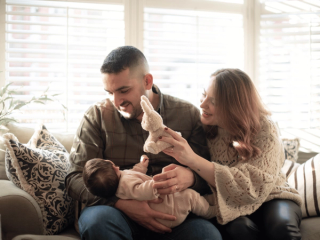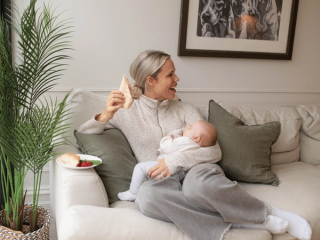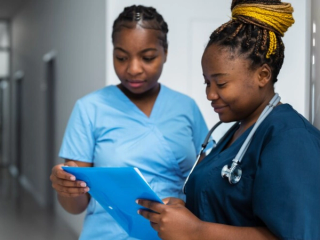
- Home
- Advice Hub
- Newborn
- New Parent Support
- First Aid Kit Essentials
First aid kit essentials
From treating minor injuries to ensuring you have the right medications, here’s a quick guide to cover everything you need to keep your little one safe and sound.
The information in this article is for education purposes and should not replace professional medical advice. Always consult medical professionals/your healthcare provider for diagnosis and treatment.
Let’s face it, being a parent is basically like being a superhero on call 24/7. Whether it's a scraped knee or a fever, being ready to tackle any unexpected twists and turns is part of the job. That's why having a well-equipped first aid kit is essential.
As both a mother and a doctor, I often get many questions from friends and family members about what essential first aid items they should have on hand for their baby. From treating minor injuries to ensuring you have the right medications, here’s a quick guide to cover everything you need to keep your little one safe and sound.
Why do you need a first aid kit?
Having the right supplies on hand can make all the difference in providing immediate relief and care for your little one until you can seek professional medical help if needed.
What do I need?
We’ve broken down the first aid checklist into two categories: essential and nice-to-have items. Let’s start with the essentials - the baby medications and equipment every parent should have at hand:
Essential medications
- Medicine for pain and fever - such as paracetamol or ibuprofen, speak to your doctor or pharmacist first to see what is suitable for your baby and don’t forget to pack the dosing syringe to give the medication.
- Antihistamine cream - to help reduce any swelling, itching, rash or discomfort caused by allergies or insect bites.
- Saline drops and a bulb syringe - for clearing stuffy noses.
- Antiseptic wipes - for cleaning wounds
- Antiseptic cream - to soothe any sore or irritated skin.
Always remember to check with your doctor that the medication is ok for your baby. Also remember to check you have the correct dose and it corresponds to your child’s age and that the medication is in date.
Essential equipment
- Thermometer - digital or ear thermometer, to monitor your child's temperature.
- Plasters - to cover any wounds or cuts. It is useful to have waterproof plasters of different sizes, you can also consider fabric dressing strips which are larger and can be cut to the size you need.
- Dressing or sterile gauze pad - to cover larger areas and wounds which a plaster may not and to protect from any infection.
- Bandages - such as crepe bandages to hold dressings in place. Tubular bandages are good for supporting injured joints.
- Adhesive tape/micropore tape - to keep bandages in place.
- Scissors - with a blunt tip for cutting dressings, bandages or tape or clothing in emergencies.
- Tweezers - for removing splinters or any debris from wounds.
- Disposable gloves
Alongside the essentials, here are some extra nice-to-have items to provide added comfort and relief:
Nice-to-have
- Wound closure strips - useful for small wounds or minor cuts and can help with the healing process by holding the wound edges close together.
- Triangular bandages - useful for folding into slings should your child get an arm or shoulder injury
- Instant cold packs - can help with soothing bumps, bruises, and sprains and help to reduce swelling.
- Eyebath or sterile saline solution - for washing out dust or foreign bodies from the eyes
- Calamine lotion - helps with soothing rashes, sunburns or irritated skin
- Blister plasters
How and where should I store my first aid kit?
You can either opt for a ready-made kit which you can buy or put together your own kit. The first aid box should ideally be waterproof, durable, clearly labelled, have a childproof lock and be easy to carry - trust me, it's much simpler to bring the first-aid kit to your child than to haul your child to the kit, especially in a hurry!
It should be kept securely in a cool, dry place where your baby or toddler isn’t able to reach it. Ensure adults in the house, including anyone who cares for your baby, are aware of the first aid kit location and how to use the items inside (it might be useful to include a first aid manual).
Keeping your first aid kit organised and in a designated spot can be a real lifesaver in times of crisis, saving you precious time during emergencies whilst ensuring you replenish your stock of supplies as needed. It's all about being prepared and having peace of mind for whatever comes your way.
On-the-go first aid kits
Consider packing a smaller, travel-friendly version of your home first aid kit with the essentials mentioned earlier. Accidents can happen anywhere, anytime, so it's wise to be prepared no matter where you are.
First aid training
In addition to having a first aid kit readily available, I highly recommend that everyone, especially new parents, complete first aid training. Free first aid courses may be available at local community centres or children’s centres, so it's worth exploring these options. Alternatively, organisations like the National Childbirth Trust (NCT)or the British Red Crossalso offer training.
The art of parenthood is really the art of being prepared for the unexpected! By having a well-stocked first aid kit at home and on the go, you can tackle whatever challenges come your way with confidence and peace of mind, so take some time to gather your supplies and organise your kit.
Remember you will often be able to treat minor injuries at home with a first aid kit, but if you are unsure or for anything serious you should seek medical attention straight away for your child - take a look at NHS website for signs to be aware of which might indicate that your child requires immediate medical attention and where to get help.
Advice & tips

Want to read more? Join the HiPP BabyClub for full access to this article.
As a BabyClub member, you'll get access to a range of exclusive benefits, including:
Monthly competitions
Discounts from our Partners
Expert advice tailored to your little one's age
Weaning recipes
HiPP shop discounts*
*10% off HiPP's online shop does not apply to our First Infant, Anti-Reflux or Comfort Formula Milk.
Important notice: Breastfeeding is best. Follow on milk should only be used as part of a mixed diet from 6 months. Talk to a healthcare professional.




